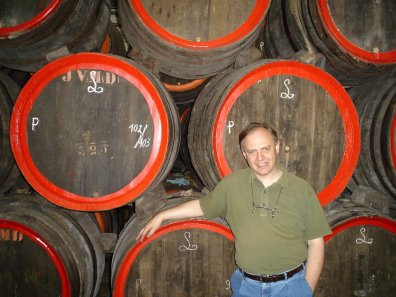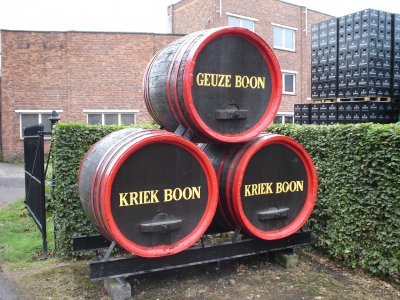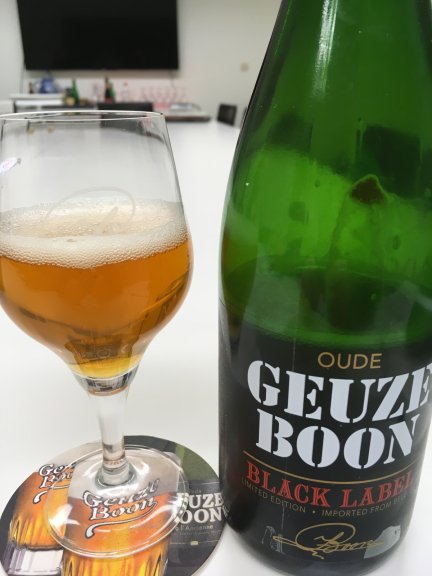Beer styles sometimes become extinct. Trying to imagine the countless varieties that have disappeared over the past thousand years seems hopeless. Thankfully, a few almost forgotten styles of ale and lager have been snatched from the brink of oblivion – often by the passionate efforts of a handful of brewers.

Frank Boon and His Lambic Barrels
Frank Boon, probably Belgium’s most noted Lambic brewer and blender, ranks as one of the world’s most dedicated Lambic conservationists. Boon brews in Lembeek, the village outside of Brussels that gave Lambic its name. Boon’s history in preserving Lambic traditions, creating beers of exceptional quality and generating renewed interest in this ancient beer style will be apparent when he addresses attendees at the 2017 Beer Bloggers & Writers Conference in Milwaukee in a full conference session Saturday, August 5th.
In the time-honored tradition, Lambic producers only brew during the colder months of the year and chill freshly boiled wort overnight in shallow vessels known as “coolships.” Carried on the breeze through open windows, wild yeast and bacteria sneak into the coolship to have their way with the wort – beginning the spontaneous fermentation that later continues in a variety of wooden barrels and foeders. When done properly, the process spawns a wheat beer of remarkable complexity with notes of soft lactic acidity, Brettanomyces character and esters reminiscent of apple, kiwi, rhubarb, citrus and honey. Geuze is a sparkling blend of old and young Lambic that can mature and evolve in bottles for decades.
In the late 1800s, multiple Lambic breweries and blenderies were scattered throughout the Pajottenland region just west of Brussels, but by the mid-1900s only about a dozen remained. The once ubiquitous rural beer style had fallen out of favor with the locals, replaced by bland lagers. Frank Boon loved the depth of character in a great Lambic and discovered the Geuze blender René De Vits of Lembeek in 1971. “René made a fine, delicate, old-style Geuze on a small scale,” recalls Boon. “When René was 65-years-old that year, he wanted to close the blendery. I made a financial plan, worked at first in a small blendery, and found a bank loan. I bought De Vits in 1978 and renamed it Boon. People thought I was crazy.”

Many modern beer geeks erroneously use the generic and overly simplistic term “sours” when referring to beers with acidity. Boon points out that Lambics should never be called “sours.” Boon suggests, “Lambics should have some acidity but not more than a white sparkling wine, and if acetic acid is dominant, this is a mistake. Lambic is not beer vinegar. One day a homebrewer gave me a sample of his beer and told me that he made a Lambic by accident. The beer tasted like vinegar – a good salad dressing but not a Lambic.”
Young Lambic can be refreshing, but taking the beer to new levels involves blending. “The quality of Lambic is expressed best in its bottled version – Oude Geuze,” Boon explains. “I will blend Lambic in the proportions of 60% one-year-old, 30% two-year-old and 10% three-year-old. The young Lambic provides the body of the Geuze, the two-year gives character and depth and the three-year creates a pleasant, winey taste. Refermentation in the bottle with the wild yeasts present in the two and three-year-old Lambic is responsible for the final touch that expresses the Brettanomyces character.”
 Global Beer Network partnered with Brouwerij Boon in a bold new push to import Boon brands into the U.S. this summer that will include traditional Oude Geuze Boon, Framboise Boon with fresh raspberries and wild cherries, Kriek Mariage Parfait with 400 grams of wild cherries per liter, kegs of Lambic Boon and Oude Kriek, and bottles of the dry and intricate Oude Geuze Boon Black Label. Made from 40% unmalted wheat, 60% barley malt, aged hops and wild yeasts, the exquisite Oude Geuze Boon Mariage Parfait rests for three years in oak before blending. Oude Geuze VAT 109 is a blend using Lambic from Boon’s 100-year-old foeder number 109. “Our oldest casks host some of our most remarkable colonies of wild yeasts,” says Boon.
Global Beer Network partnered with Brouwerij Boon in a bold new push to import Boon brands into the U.S. this summer that will include traditional Oude Geuze Boon, Framboise Boon with fresh raspberries and wild cherries, Kriek Mariage Parfait with 400 grams of wild cherries per liter, kegs of Lambic Boon and Oude Kriek, and bottles of the dry and intricate Oude Geuze Boon Black Label. Made from 40% unmalted wheat, 60% barley malt, aged hops and wild yeasts, the exquisite Oude Geuze Boon Mariage Parfait rests for three years in oak before blending. Oude Geuze VAT 109 is a blend using Lambic from Boon’s 100-year-old foeder number 109. “Our oldest casks host some of our most remarkable colonies of wild yeasts,” says Boon.Boon concedes that spontaneous fermentation of beer may be possible in most places around the world, but nothing compares to the true Lambics born only around the Zenne River valley near Brussels. He points out, “The reason Lambic is linked to the coolships from our Pajottenland region is that the local wild yeasts belong to the proper airborne strains, and they overgrow other microorganisms to make our delicious beer. 20 years ago, the terms ‘Geuze’ and ‘Lambic’ were protected by E.U. appellation regulations, and it’s important that brewers everywhere in the world respect the use of these names.”
It’s safe to say that no one respects the production, culture and history of Lambic more than Frank Boon. Taking into account his vast knowledge, zeal and experience, Boon’s discussion at BBC17 could easily fill an entire day, but attendees will have to settle for an hour or so.

No comments:
Post a Comment